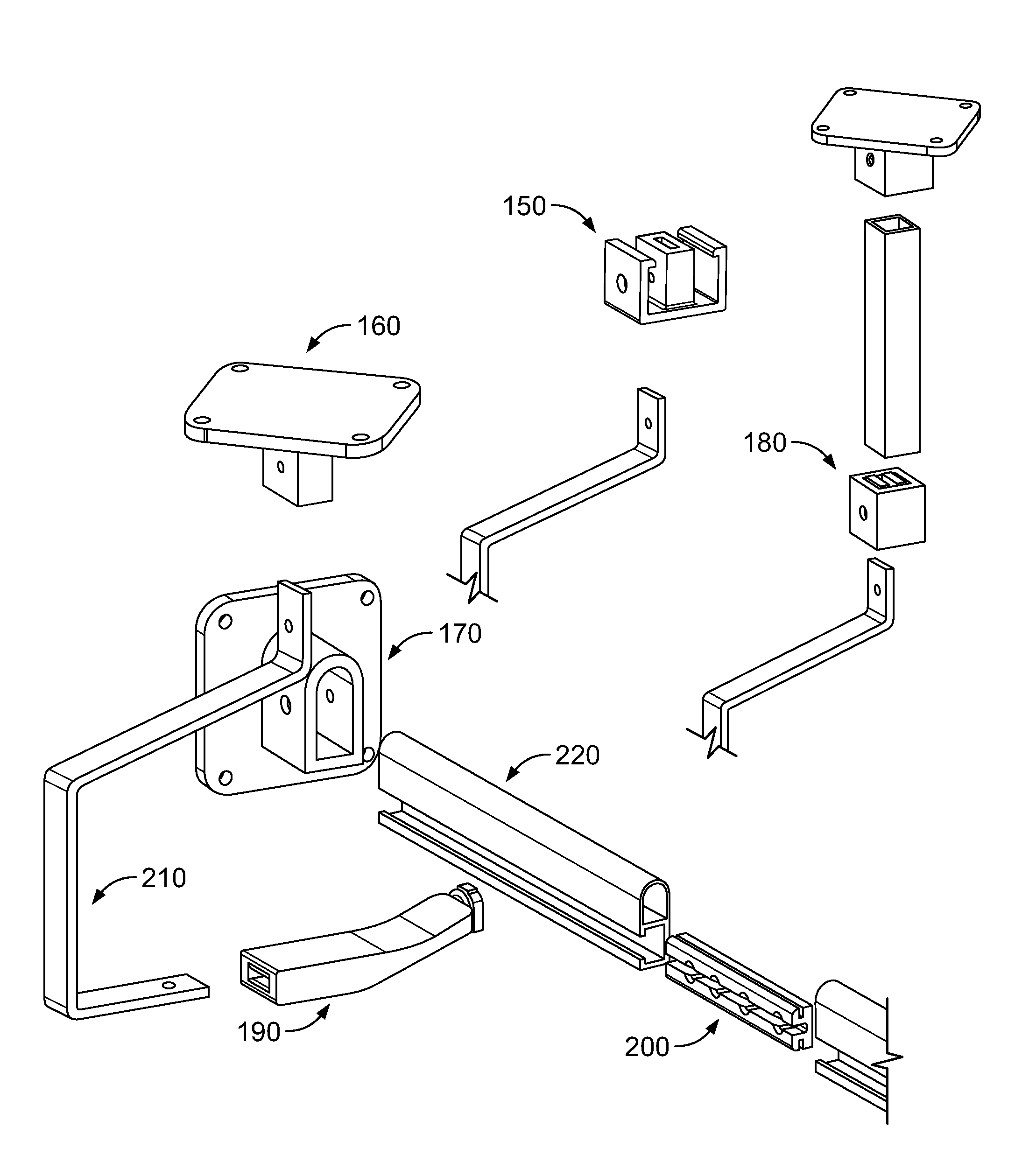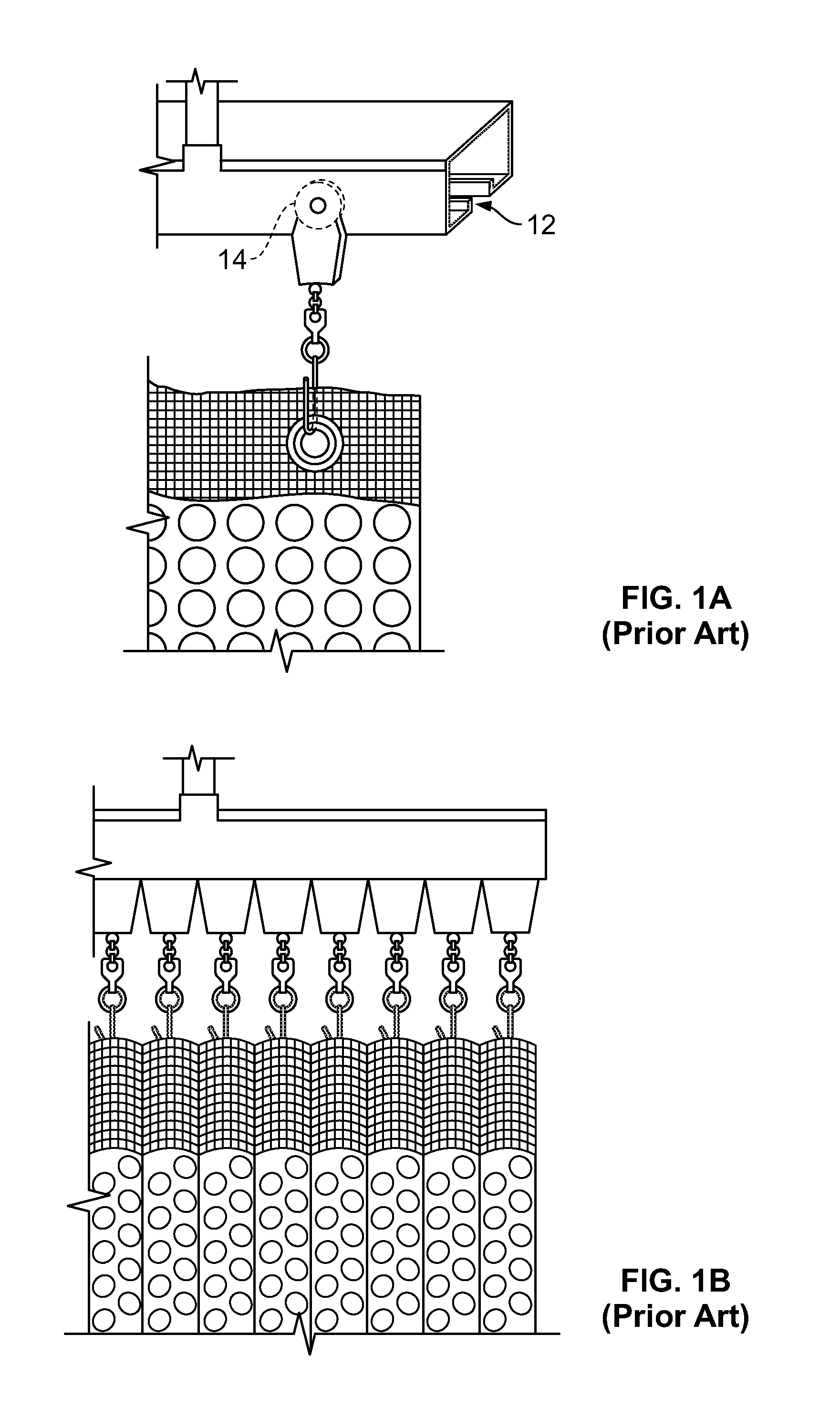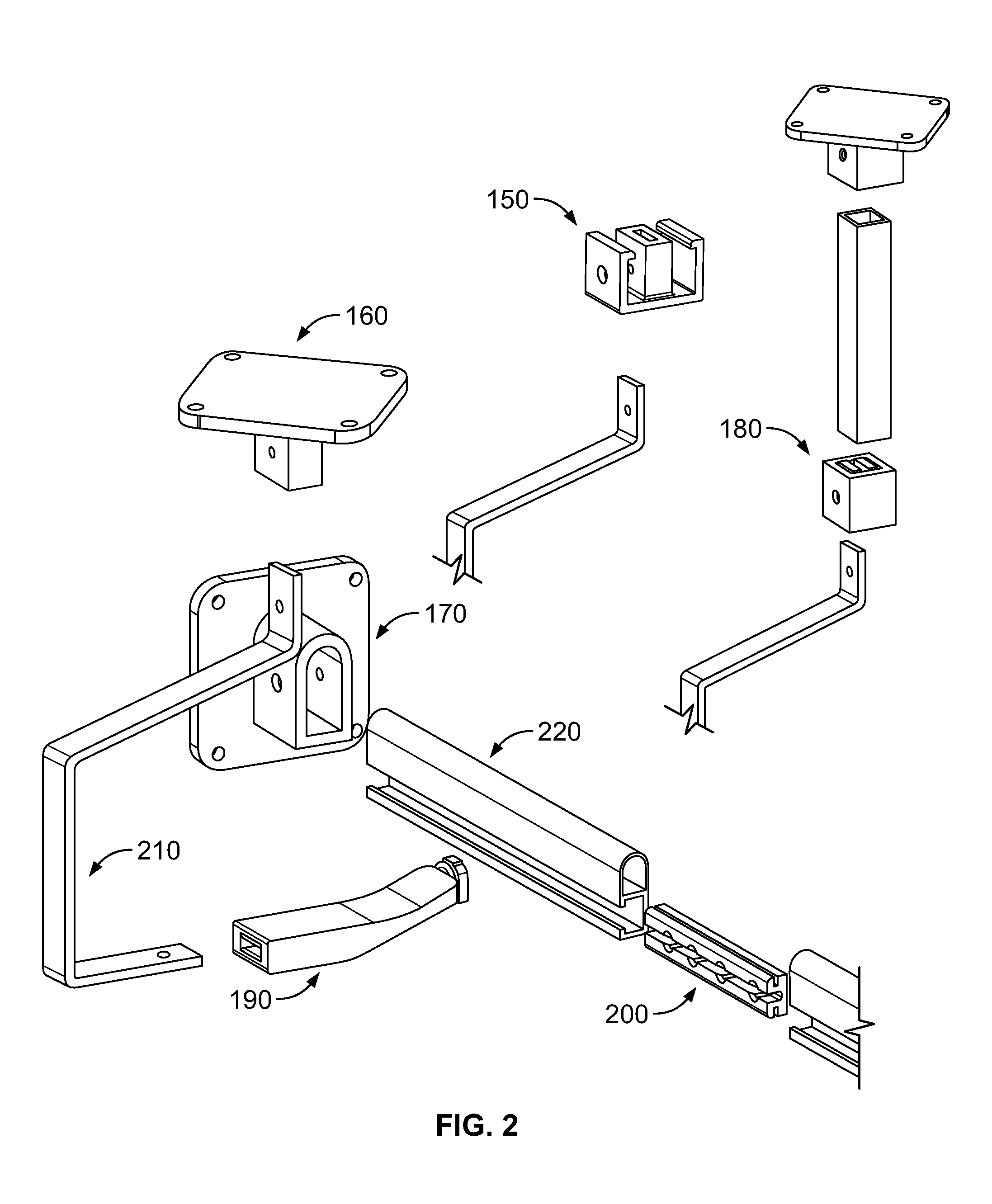Track and Curtain System
a curtain system and track technology, applied in the field of track systems, can solve the problems of disturbing the patient, not only the patient, but also the patient in the adjoining room, and the noise of the curtain sliding along the aluminum track is very disturbing to the patient, so as to facilitate the insertion of the curtain, facilitate the loading, and reduce the cos
- Summary
- Abstract
- Description
- Claims
- Application Information
AI Technical Summary
Benefits of technology
Problems solved by technology
Method used
Image
Examples
Embodiment Construction
[0099]In accordance with the invention, a modular system is provided for hanging an associated curtain. As shown in the figures, the modules of the system include a series of track sections, the track sections being configured as a combination of a rod and a track, with the benefits of both. The modular track sections are further configured for attachment to each other to adjust the length and shape of the track to suit any desired environment.
[0100]Like a rod, the top surface 938 of each modular track section is curved; thus, the openings of a curtain can hang from and slide along that top surface 938, as with the top surface of an ordinary (cylindrical) rod or tube. In particular, the top surface of each modular track section is preferably shaped as the upper portion of a rod or cylinder. Thus, a curtain with an opening therein or with rings 62 can be suspended from the track, such that the opening or rings slide or glide along that top surface. Examples of curtains having rings i...
PUM
 Login to View More
Login to View More Abstract
Description
Claims
Application Information
 Login to View More
Login to View More - R&D
- Intellectual Property
- Life Sciences
- Materials
- Tech Scout
- Unparalleled Data Quality
- Higher Quality Content
- 60% Fewer Hallucinations
Browse by: Latest US Patents, China's latest patents, Technical Efficacy Thesaurus, Application Domain, Technology Topic, Popular Technical Reports.
© 2025 PatSnap. All rights reserved.Legal|Privacy policy|Modern Slavery Act Transparency Statement|Sitemap|About US| Contact US: help@patsnap.com



